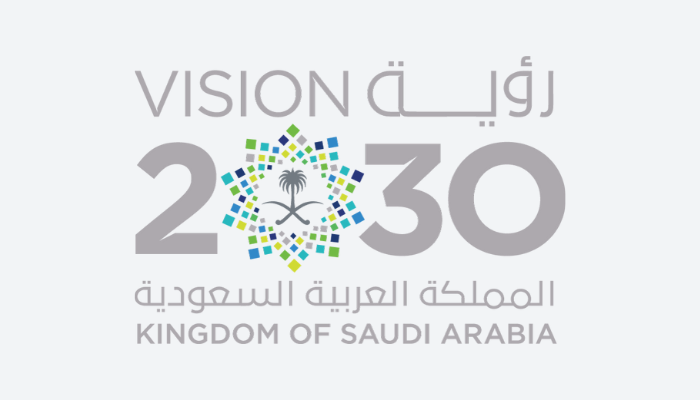The Middle East’s ambitions are such that a new term has been invented; we are in the age of the ‘giga-project’. These projects are driven by innovation and sustainability and require more than an ounce of creativity and vision, a coming together of the sharpest of minds and unprecedented investment to turn ideas into reality.
In Saudi Arabia, projects such as NEOM, the country’s flagship ‘Vision 2030’ project, a 27,000 km2 development in the northwest of the Kingdom is pushing the boundaries of modern developments. Similarly, the Red Sea 34,000 km2, carbon neutral luxury venture development is also set to transform Saudi’s traditional oil-based economy.

We can also see evidence of other Middle East countries looking to diversify their economies. One of the most successful and perhaps most obvious is the UAE, which is looking to build upon its strong position as a tourist destination with significant investment under their ‘New Tourism Strategy 2031’.
It is evident aviation has been an engine for growth of the Middle East over recent decades and it is clear it will continue to do so in the future. Tourism is set to become the boom industry across the region with Oman, Qatar and Bahrain - to name but a few - also focussing ever more so on the tourist sector.
What does this mean for us as an industry? How do we keep pace with growing demand and what about the ever-present challenge of sustainability?
Whilst globally, passenger traffic levels are still slightly below pre-COVID highs, it is a different story in the Middle East where we are now seeing more than a 4% increase1. Additionally, data from OAG ranks Dubai and Doha International Airports as 1st and 9th respectively in the top 10 busiest international airports for May 20232. And forecasts are encouraging, indicating Middle East and Asia-Pacific growth will outperform other regions until 20403. We are making up for lost time, with heightened aspiration for modern infrastructure, new technology and a thirst for creativity and innovation.
In November and December 2023, the Middle East will play host to COP28 with Dubai welcoming 140 heads of state and government. In 2022, IATA member airlines committed to net-zero carbon emissions from their operations by 2050. COVID has galvanised global views and rebuilding aviation in a more sustainable way will be central to all future initiatives and projects. This is the challenge we have been set and consequently, you can expect there to be increased focus placed upon aviation and the environment.
Saudi Arabia has committed to invest $550 billion in tourism development, tripling aviation passenger capacity by 2030, supporting claims it is now the world’s second fastest growing tourism destination4. Making sure infrastructure is aligned to the vision for economic growth and sustainable living is crucial. This is true not just for Saudi Arabia, but also for the wider region. Due to the importance of the Middle East as an international hub - a crossroads for business, commerce and tourism, the region is focussed on building a robust and modern infrastructure with efficient and resilient air traffic operations alongside planned airport expansions.
This includes the modernisation of airspace where a number of Middle East states are using the latest airspace technology to create highly systemised networks including new concepts such as Free Route Airspace. Last week the GCAA in Abu Dhabi commenced live operations of the UAE's Free Route Airspace, the first in the Middle East region. The UK’s most recent airspace modernisation programme, ‘West’, a combination of both highly defined systemised networks and Free Route Airspace, is projected to reduce CO2 emissions by 12,000 tonnes per year and save 150,000 nautical miles of flying time for aircraft within the updated airspace.
Combined with the standardisation of ATM operations, technology deployments such as Intelligent Approach and Demand Capacity Balancer (DCB) further enable optimisation and improved resilience of ATM operations through increased consistency, predictability, and better decision making.
Intelligent Approach, a system developed between NATS and Leidos and now deployed at Toronto Pearson, Amsterdam Schiphol and London Heathrow international airports is an arrival spacing tool that not only improves operational resilience, delivers better on-time performance reduces CO2 emissions. DCB enables agile operational responses to schedule changes, minimising unnecessary flight miles while enhancing the passenger experience.
Inevitably, advancements in sustainable aviation fuel and aircraft design will take time to implement, therefore, innovation, technology and digitisation are set to play a key role in transforming our ATM environment, enabling the industry to keep pace with demand and reducing our overall impact on the environment.
It's a fascinating time to live and work in the Middle East, and even more so to specialise in aviation. The last few months have seen passenger numbers soar across the region and despite the economic headwinds there is certainly an air of optimism. With IATA predicting a return to profit this year for global aviation and strong competition and demand across the region, the outlook is encouraging. Our challenge at NATS is to support the visionaries of the future in technological, innovative and sustainable ways in order to make their visions a reality.
Sources
- Source ACI - ACI Asia-Pacific airports traffic (aci-asiapac.aero)
- Source OAG - Busiest Airports in the World | OAG.
- Source ACI - Asia-Pacific Airports Magazine Issue 1 Customer Service.pdf (aci-asiapac.aero)
- Source - UNWTO: Saudi Arabia is the 2nd fastest growing tourism destination globally in 2022 - Construction Week Online